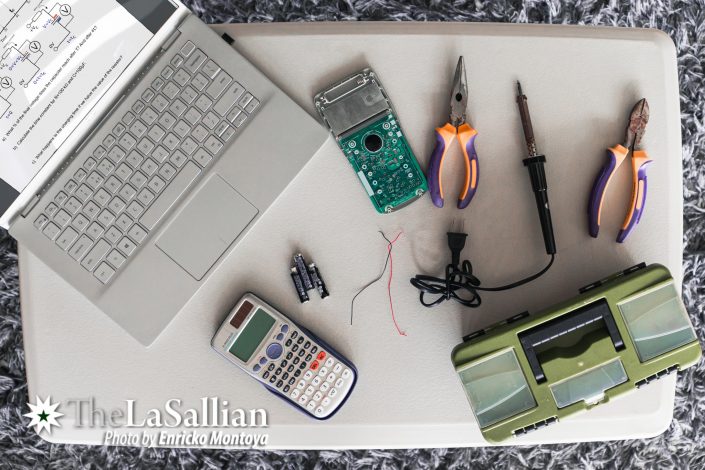Several months into the COVID-19 pandemic, schools and universities have adapted a module-based online learning system. Students are probably used to going online to attend classes via Zoom, Google Meet, and other video conferencing platforms—even for physical education classes.
But where does that leave the laboratory classes? This question is particularly salient for students of the College of Science, who wonder if Physics, Chemistry, and Biology lab classes could be integrated with online learning. As a means to provide students with first-hand experience on the workings of their chosen field, these classes are vital as they demonstrate the techniques, safety hazards, and knowledge necessary for the application of learned material.
Currently, certain laboratory classes such as those for Organic Chemistry are unavailable, with students unable to enlist through the University’s enrollment facility. It is, after all, difficult and may even be impossible to simulate a laboratory experience with chemical or biological processes online. Nonetheless, since last term, the Physics Department has implemented an online laboratory design that allows students to study electronics, mechanics, and optics.
Exploring different possibilities
With the limitations of the home setting, the Physics Department and its students are left to improvise. “The department designed the new hands-on and home-based laboratory modules so that the students would still be able to accomplish the learning objectives,” Physics Department Chair Dr. Carla Manzano shares.
Like a typical online class session, laboratory activities are done through video conferencing platforms. Students have the option to work individually or by pair in breakout rooms, and each student has their own set of materials to work with to individually perform experiments.
For mechanics and wave-optics lab classes, students use their smartphones in hands-on activities. The experiments make full use of a student’s smartphone, utilizing its built-in accelerometer, gyroscope, light sensor, and microphone. Additionally, students use free mobile applications such as PHYPHOX, which maximizes the use of the phone’s sensors, and Google Science Journal for data collection and recording.
The Physics Department also requires students to buy the materials for the basic circuits laboratory courses. They are, however, given the option to purchase the DLSU Physics Electrical Package from the electronics store e-Gizmo and have it delivered to their homes. The simulations in these laboratory classes also utilize applications such as MATLAB and Multisim for students to better experience circuit analysis and design.

Outside the box
The key design of these online laboratory classes, Manzano explains, is that the “home-based laboratory modules” would still allow students to learn and utilize essential laboratory skills such as designing experiments, making accurate and precise measurements, and making conclusions based on analysis of measured data. “I do not believe that online classes are not ideal for lab work,” says Manzano.
Another aspect of this design, Manzano clarifies, is that it does not simply improvise. She maintains that the laboratory modules allow students to see other ways of doing things. Of course, there still exist limitations such as the expense and availability of certain materials, as well as the fact that the laboratory is conducted in a home environment. In addition, the faculty has a difficulty in guiding and giving feedback to students.
In a face-to-face setting, professors can directly demonstrate procedures and proper handling. Online classes, however, do not offer that level of interaction between students and faculty. The same can be said for student-to-student interaction. “If there is anything that I believe that students miss out, it is the experiences and peer-learning they can get from face-to-face socialization and interactions,” Manzano laments.
These, however, are issues that can be resolved in due time. As she puts it, “We are motivated to design new learning activities so that our students still achieve the learning goals of the course.”
With all this, it is important to remember that this design is still evolving. Manzano mentions that both faculty and students provide feedback to help improve and innovate the design of the home-based laboratory module. She comments, “We as Lasallians, take our ‘new normal’ situation as a challenge to think out of the box.”
